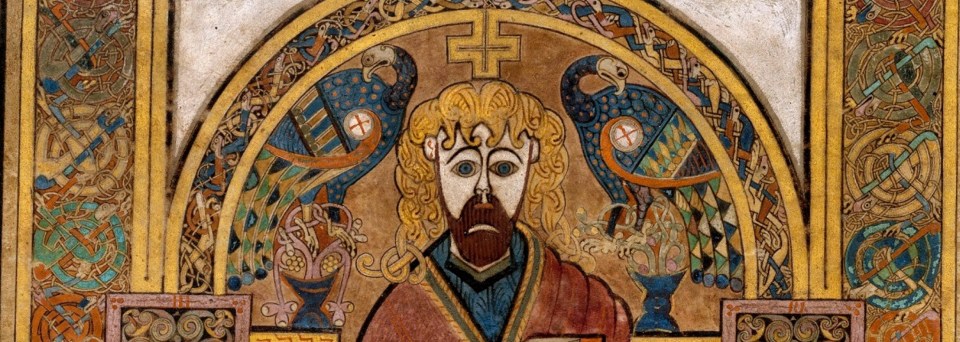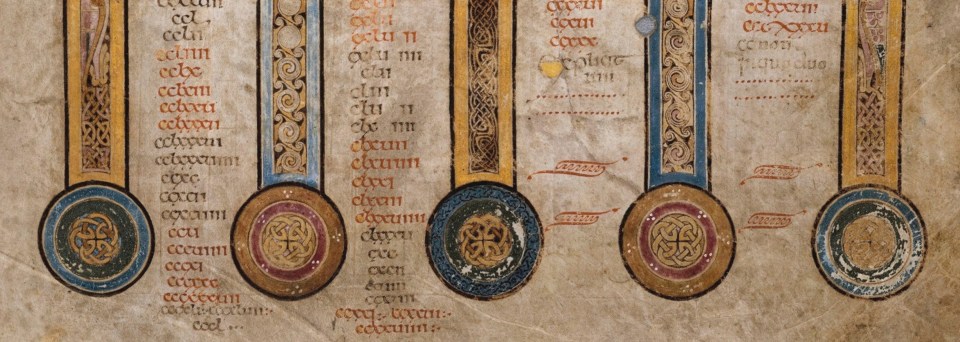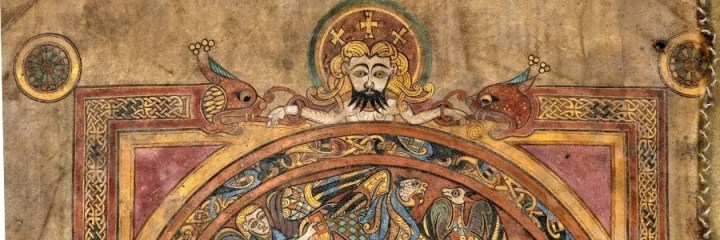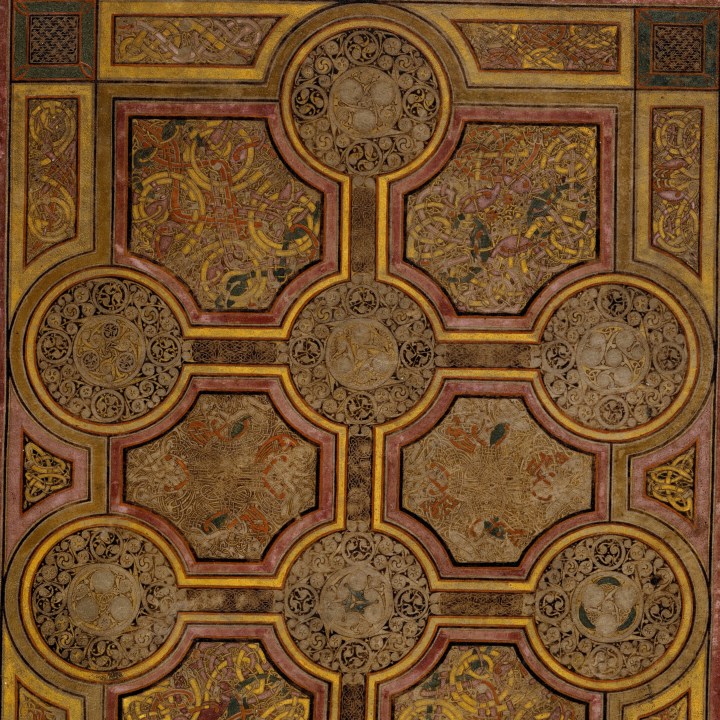

Paintings in manuscripts, protected for centuries in bound volumes, are the best-preserved examples of how medieval colours were used. The Book of Kells is one such example, its pages featuring intricate illuminations in shades of blue, white, red, pink, green and yellow. One of the book’s most prominent colours is blue, which features on nearly every decorative page.
For a long time, it was thought that the colour blue which appears in the 9th century manuscript came from the mineral lapis lazuli – a very precious mineral which is difficult it is to mine and was available at the time only from Afghanistan. Lapis lazuli would have also required very careful processing before it could be used as a blue pigment.

Thanks to research carried out by the Conservation team at Trinity College Dublin to better understand the chemistry of the book’s lavish colours and how to preserve them, we now know that the book’s blues were in fact made from woad, a flowering plant used throughout Europe and Asia to produce dyes and pigments. This makes sense, as the blue shades are dark – as is the pigment extracted from woad – rather than the lighter shade of blue traditionally associated with lapis lazuli. Ancient Egyptians were the first to realise the potential of woad as a dye around 2500 BCE. Eventually, the use of woad as a pigment spread further throughout Europe and Asia and, by the Medieval period, it was cultivated throughout Europe for that very purpose.
The plant produces an adaptable pigment which can be mixed with white to make light blue, or with glossy substances to make more translucent deep blues. The Book of Kells contains such an incredible range of blue hues throughout thanks to this versatility, with pigments layered to produce the desired result.
Looking for inspiration to enter the Book of Kells Creative Competition?
This year’s theme is colours in the Book of Kells and the best way to get inspired is to view the book’s beautiful hues up close and personal – and with striking shades of blue, green, white and pink throughout, a wealth of inspiration awaits. For those who would rather learn more about the ancient tome from the comfort of their own home, we invite you to take full advantage of our inspirational materials, handily stashed online for your viewing pleasure.
The deadline to enter the Book of Kells Creative Competition is 30 October 2020. Entry is free and online.

